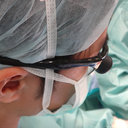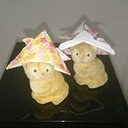[Transverse myelopathy caused by aneurysmal bone cyst of the thoracic vertebra in an old person].
Mots clés
Abstrait
A 63-year-old woman developed progressive weakness and sensory disturbance in the legs, and had to walk with a stick three months later. Neurological examination revealed symptoms of transverse myelopathy at the level of the first lumbar cord. The plain X-rays revealed flattening and osteolytic changes of the 11th thoracic vertebra which suggested a spine tumor. CT showed a destruction of the 11th vertebra which invaded the spinal canal. The 11th vertebral body and the arches were filled by lobulated tumor masses. MRI of the spine revealed the 11th vertebra to be low in T1 and high in T2 images with marked spotty enhancement effect by gadolinium. The neighboring discs and spines were not involved by the tumor. The tumor was surgically resected with resultant massive bleeding. Histological diagnosis of the tumor was aneurysmal bone cyst. She developed a postoperative stress ulcer with perforation, but recovered. Finally she was able to walk without a stick nine months after surgery. Aneurysmal bone cyst, though very rare in elderly persons, should be considered in differentiating spine diseases which cause transverse myelopathy. It is important to make a preoperative diagnosis because severe bleeding may occur during a surgical procedure, as was seen in our case.



